As the entire world battles the health and economic impact of coronavirus (COVID-19), many businesses are wondering what they can do to survive.
The reality is that no matter your company size, industry or location, every business has been and will be affected by COVID-19 for potentially years to come.
With so much uncertainty and confusion at the moment, now is the time for businesses to replace noise with clarity — paralysis with action. There’s a lot we can’t control at the moment, but there’s a lot we can control.
The purpose of this comprehensive 5,000-word guide is to provide a top 10 list of tactics that you can apply in your business right now.
If you'd prefer to read this guide as a PDF eBook click here.
Hopefully the tips in this guide will help you not only survive this crisis but come out leaner and stronger on the other side, positioned for the economic growth to come.
This guide includes insights from some of the world’s leading sales, marketing and business minds — including Neil Patel, Rand Fishkin, Tony Robbins, Google, HubSpot, McKinsey & Company and loads more.
Let’s look at each tip one by one.
1. Mindset
The first tip is the most critical — mindset.
With no shortage of news, media and other content to consume at the moment about everything COVID-19, the challenge is blocking this out as much as possible and going on an “information diet.”
The sensationalism, hype, fear and “doom and gloom” in the media will not help your business survive and thrive post this pandemic. We need to remember that the media are also businesses like yours. It’s in the interests of the media to keep eyeballs on their screens, improve their ratings and ultimately sell more advertising revenue.
Don’t get sucked into the 24/7 news cycle vortex but instead try and use your time to take action, feed your mind with positive things and do what you can to move your business forward.
"Courage is not the absence of fear. It is going forward with the face of fear." Abraham Lincoln
And when we look back at the last 90+ years, the economy has had exponential growth with the S&P 500 Index growing 1,000% over the past 90 years, or an average of 11% per annum. This growth is despite as many as 47 recessions and other global crises.
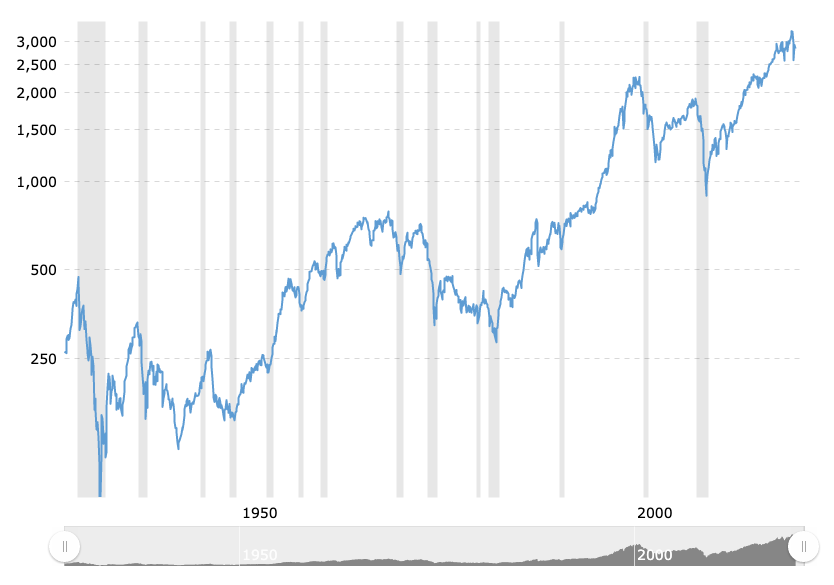
When you look back at history, it's incredible just how many of today's big brands were founded during a recession. Here's a list of a few of them:
- General Electric, 1890
- IBM, 1896
- General Motors, 1908
- Disney, 1923
- Microsoft, 1975
- CNN, 1980
- Apple, 2001
This list of brands demonstrates that growth can be achieved even during an economic recession. Tough times don't last forever, and often they are the impetus for creativity and innovation.
We need to remember that spring always follows winter — day always follows night.
It’s natural to be cautious during these uncertain times but remember that this is just one battle in a war.
Think long-term, strategically and stay positive.
“Every day stand guard at the door of your mind.” Jim Rohn
2. Candy, vitamins and painkillers
In the world of venture capital, the concept of categorising businesses as candy, vitamins or painkillers is well understood.
Here’s what a venture capitalist from the Bay Area in the United States was known for saying.
“We divide business plans into three categories: candy, vitamins, and painkillers. We throw away the candy. We look at vitamins. We really like painkillers. We especially like addictive painkillers!” Kevin Fong
And it's a perfect way to analyse your business right now during this COVID-19 crisis.
Candy-like businesses like real candy, are “nice-to-have” and give us that sweet sugary-hit. They’re also generally really addictive. For example, the video game Candy Crush Saga (aptly named) is estimated to generate $US1.5 million in revenue every day. Not too bad for a “candy” business.
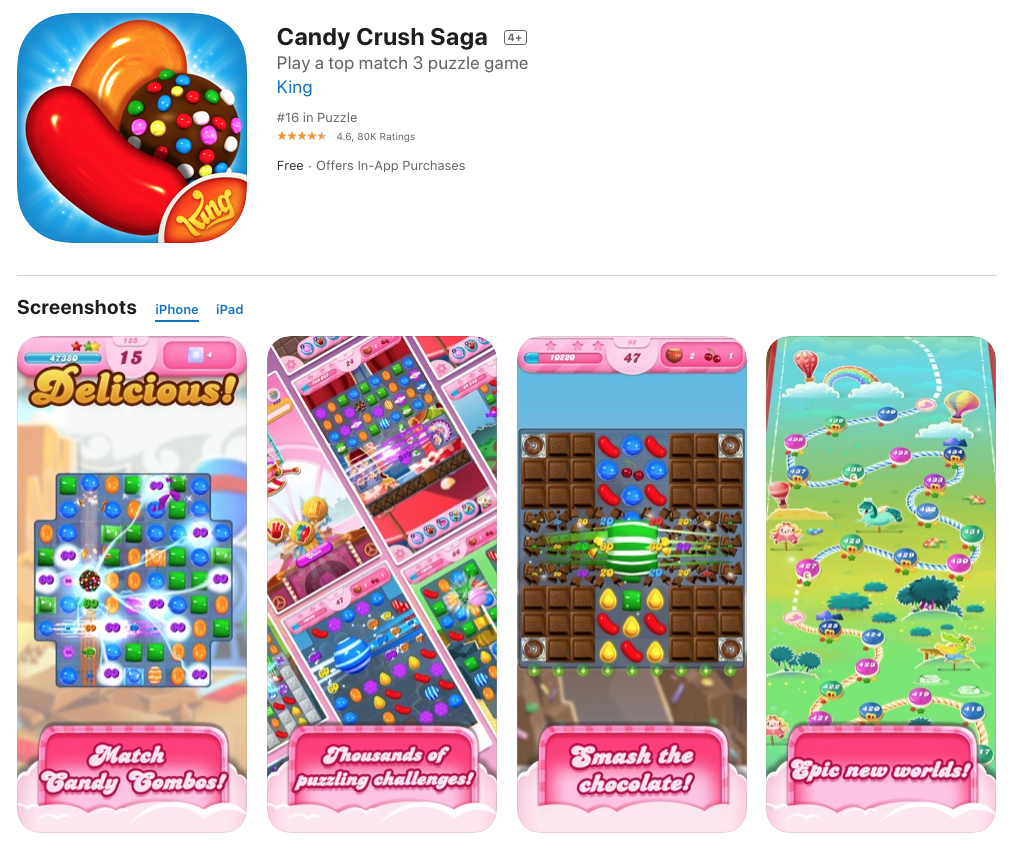
A vitamin-like business is important but not urgent. If you don’t take any vitamins this week, this month or even this year, you may not even notice any real downside.
And even if you really need vitamins, you still might talk yourself out of it and blame other causes like a lack of sleep or coffee.
For example, think of a gym. It provides obvious health benefits, both now and for the future. But many (not all) people, view it as optional. Important but not urgent.
This explains why gyms get a surge of sign-ups in January every year, only to find that some 80% of people quit within five months or even worse, keep their membership going but never turn up for a workout.
The thing about vitamin-like businesses is that they can become painkillers. Your product or service might even be part candy, vitamin and painkiller at the same time.
Painkiller-like businesses solve a burning problem or frustration.
Twitter is an excellent example of this. It started off in early 2006 like a vitamin. A social media platform that helped people communicate. But very quickly — and especially in 2020 — Twitter is an essential painkiller for government, businesses and influencers to build a brand and deliver a message fast.
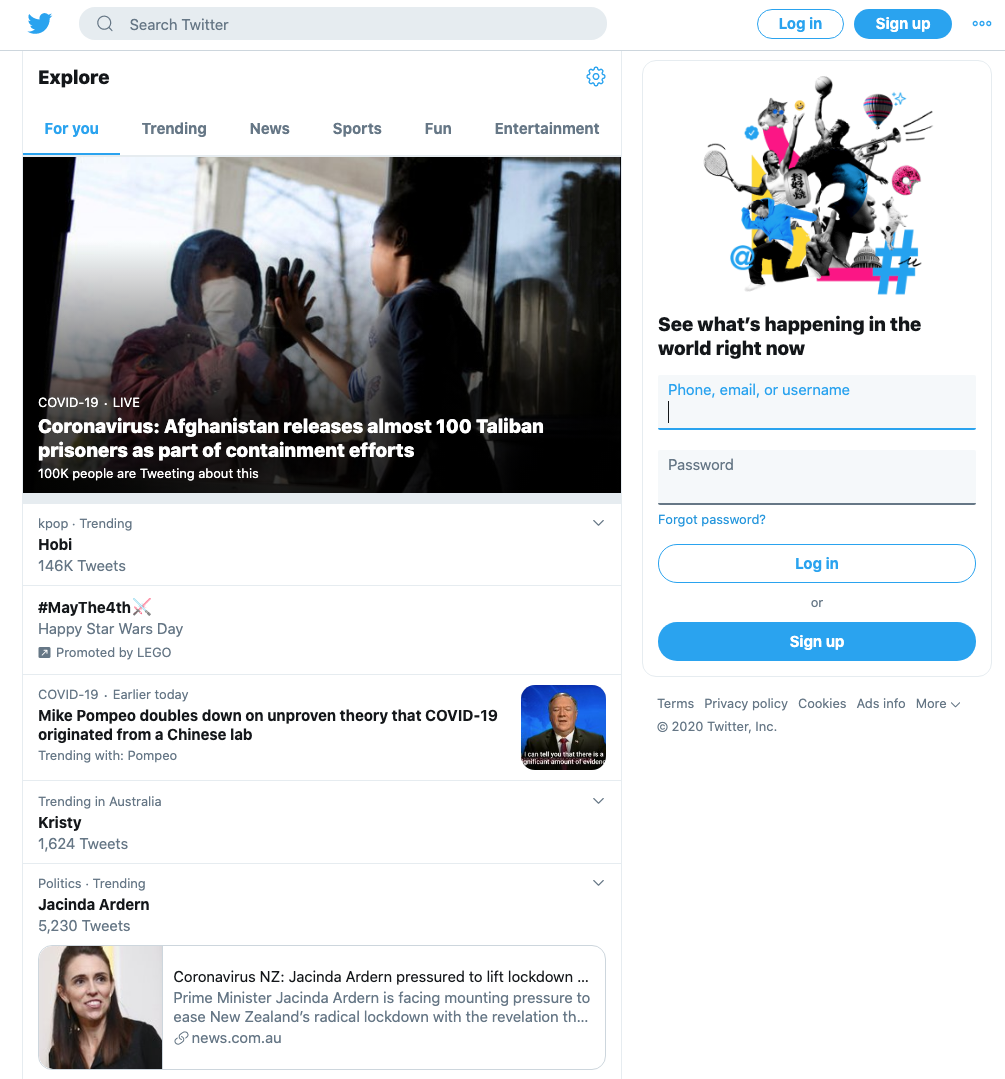
So what does this analogy mean for you?
COVID-19 has hammered home the importance of being agile, nimble with the ability to pivot your business from candy to vitamin, from vitamin to painkiller.
- How can you pivot your business?
- Can you adapt an existing product or service?
- Can you move your business 100% online?
- Can you provide something of value for free?
- Can you create a product or service that’s in high demand?
For example, global luxury giant LVMH is making hand sanitiser to help French hospitals. Attica — a top restaurant in Melbourne — is selling a take-away menu. More than 130 companies in Australia have responded to the call to manufacture personal protective equipment (PPE) like face masks, gowns and gloves.
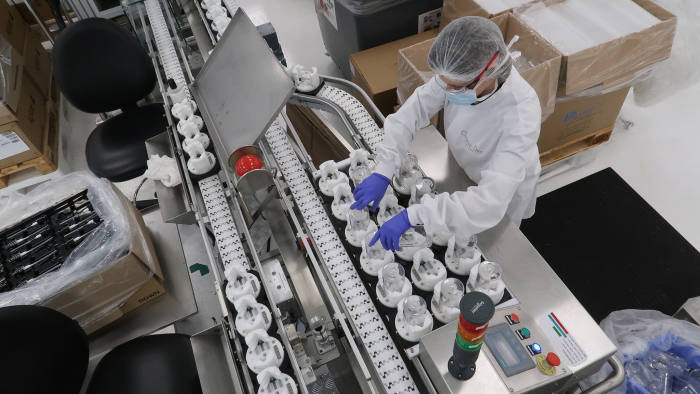
This blog post by SEMrush outlines the winners and losers by industry from a pandemic — could you learn something from one of these industries? Here's a short list:
- Remote working platforms. It’s no surprise that Zoom’s market value has skyrocketed in recent weeks due to COVID-19. Zoom’s share price has risen from $108 on March 16 to $162 on March 23. Traffic to Zoom’s website has increased by 67 million site visits during the month of March. Following the success of Zoom, can you pivot any of your services online via video conference?
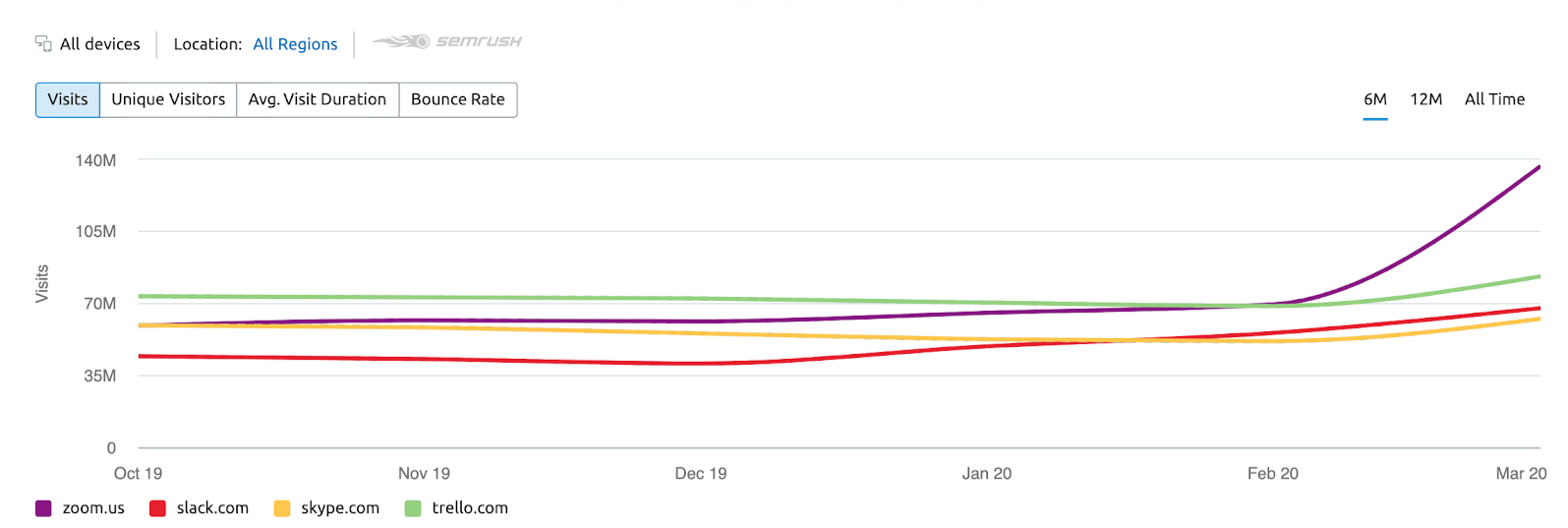
- Home fitness. According to SEMrush in March 2020, the search volumes for jump ropes increased by 123%. The online demand for yoga saw an 811% major increase, while fitness mats saw a 511% increase, and dumbbells, 397%. Do you have any products that you can sell online?
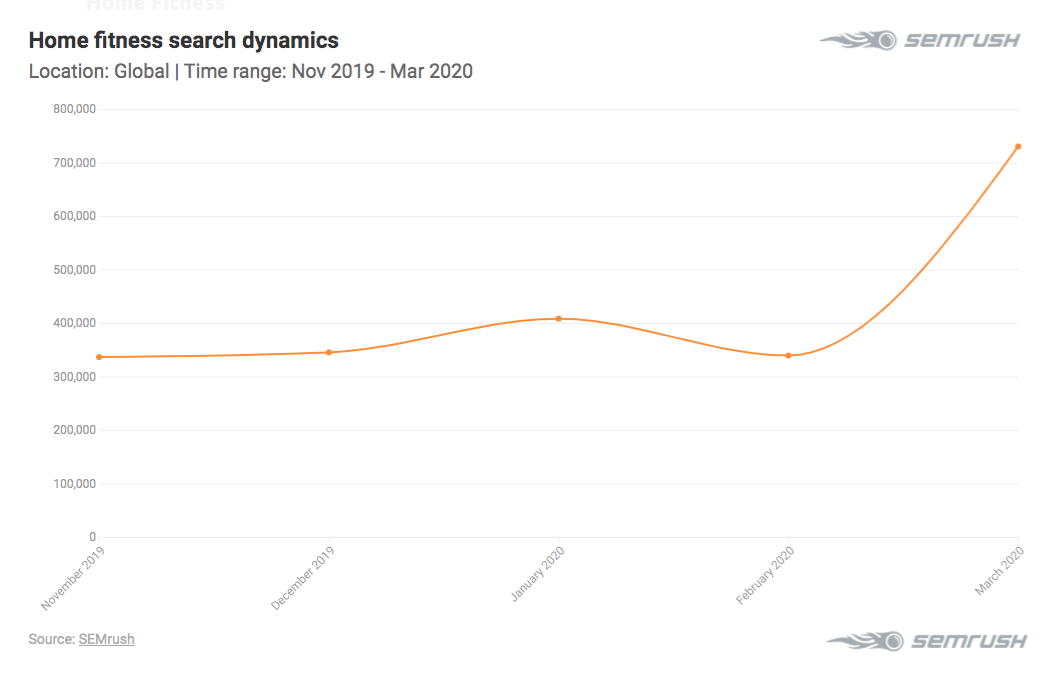
- Food delivery. Searches for food delivery services increased by 56% on average — depending on the company. Amazon Fresh and Instacart showed the biggest increase — with increases of up to 200%. Can you deliver any of your products and services?
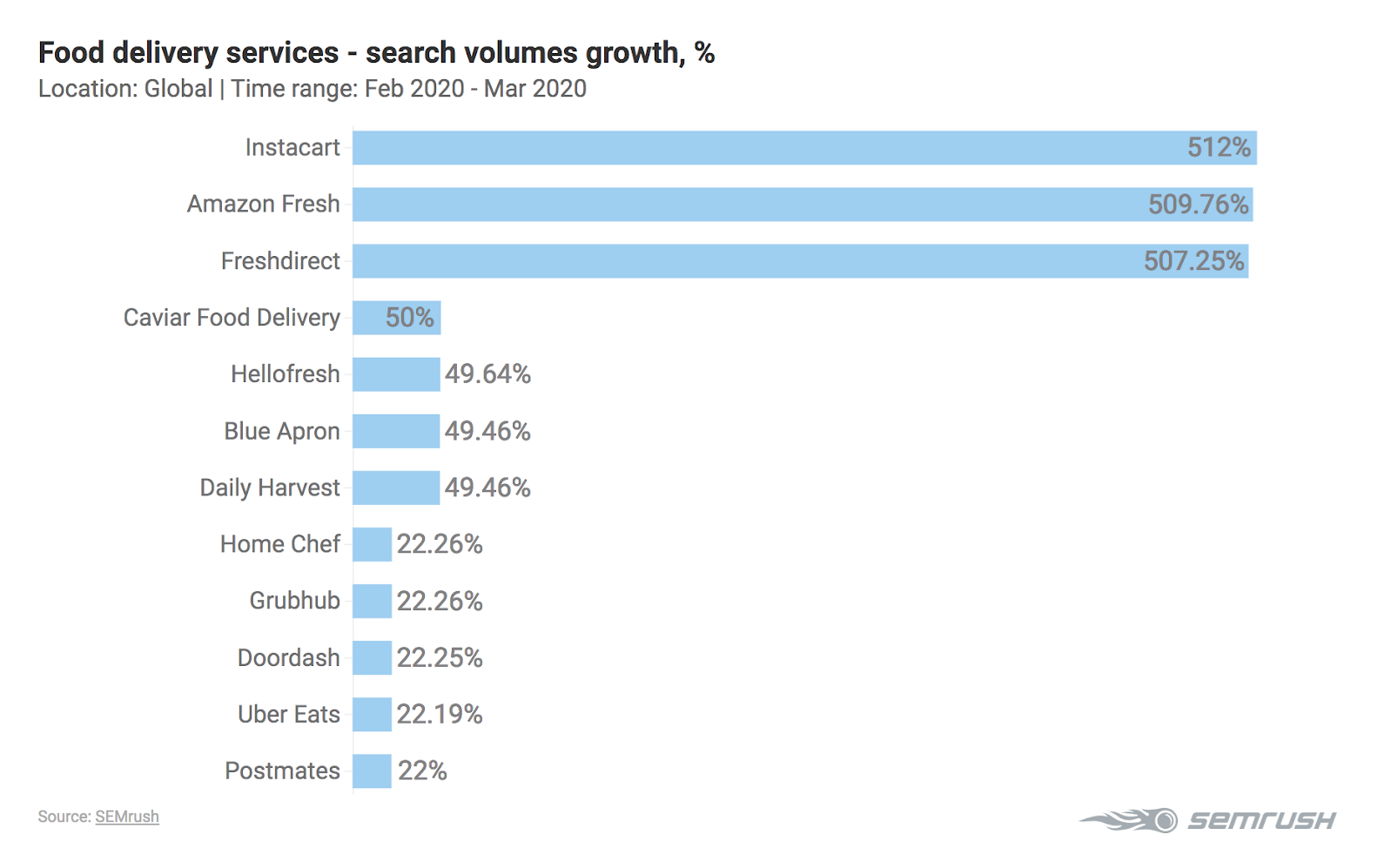
- Online courses. With more and more people finding themselves in lockdown and or isolation, it’s not too surprising that interest in online courses has skyrocketed during this pandemic. Could your business provide any educational content in the form of an online course?
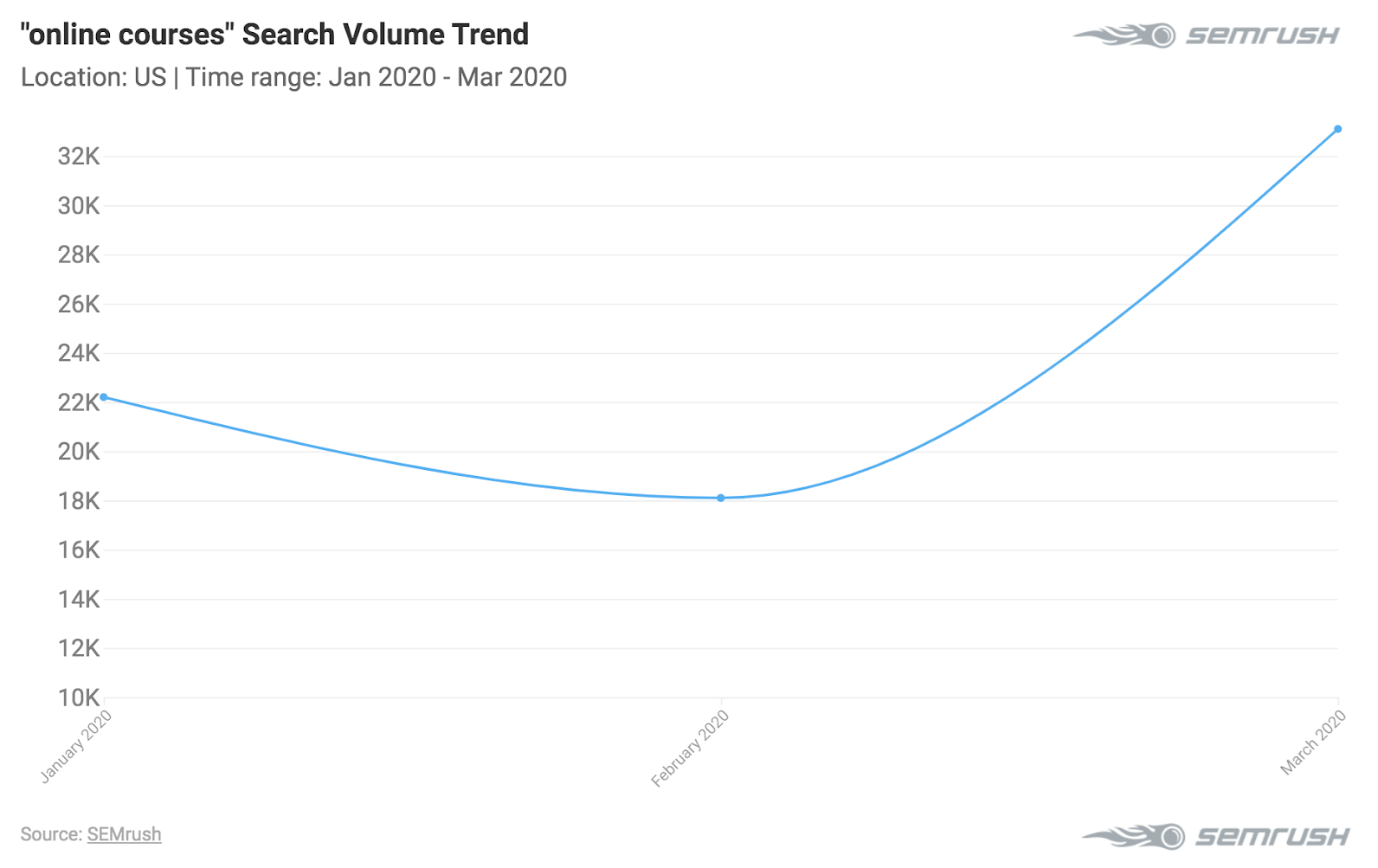
The key to pivoting during COVID-19 is to help not sell and to think of creative and innovative painkiller solutions.
One thing we’re doing here at Content Chemistry is offering a limited number of free digital marketing audits each month. It's a way to provide loads of value to businesses who are looking to get their “house-in-order” from a marketing point of view.
3. Overcommunicate
Silence and going to ground is the worst thing you can do right now. Businesses, just like leaders, need to be present during a crisis.
And one way to be present is to overcommunicate. Don’t abandon your customers during this time. View this period of time as an opportunity to communicate even more with your customers.
Due to the speed and scale of the COVID-19 pandemic, your customers and people, in general, are searching for transparency, guidance and calm.
It’s no surprise why Australian Prime Minister Scott Morrison held almost daily (then weekly) press conferences in the early days of the pandemic. Or why Donald Trump held daily press conferences in addition to some selected appearances on TV.
Here are a few things you can do right now in your business when it comes to communication:
- Empathy first. Focus on your customers first and lead with empathy. Anxiety has never been higher. Denial won’t help. Focus on what your business can do to help your customers and prospects. How can you add value? Can you get some feedback from your customers?
- Start (or join) the conversation. Embrace the conversation with your customers and prospects. Start (or join) conversations, engage with your community and try to make it right with dissatisfied customers. But keep it organic, not forced.
- Give your customers what they need when they need it. Since the crisis started, what your customers need has changed. As cases drop around the world and restrictions start getting lifted, optimism is returning slowly. Match the mood of your customers in your communication, language and tone of voice.
- Communicate clearly, simply and frequently. Your customers don’t need a thesis, but regular communication that’s clear and regular is generally best.
- Be transparent. Trust is super important in a crisis. So be honest about how your business is going, don’t be afraid of being vulnerable, be transparent and build that loyalty.
- Keep the bigger picture. As the world gets on top of this crisis and we move towards the “new normal,” when appropriate, use your communication to restore confidence, optimism and to reiterate your vision for the future.
As a business owner, you can think of yourself as a pilot on an A380 aircraft.
Imagine how the passengers would feel if, during some turbulence, you get on the speaker and start screaming that “We’re all going to die!” or words to that effect. What effect is that going to have on the passengers? Panic, fear and a whole lot of bad.
But what about if instead of panicking, you calmly get on the speaker and say “Hi everyone, we’ve just hit an air pocket. This is perfectly normal. To make your flight a little bit more comfortable, we’re going to lower our altitude and adjust our course.” You can see the difference in communication here and the impact.
Just like that pilot, as a business owner and leader, reassure your customers and be like that calming, anti-anxiety message.
4. Cut with a scalpel not a chainsaw
Most businesses have had to make cuts to survive this pandemic. Now is the time to get lean and fit financially, and position your business for the economic growth post this crisis.
But what many businesses are doing is cutting things that drive revenue for their business. The foremost example of this is marketing. Marketing provides the oxygen for your business and should not be thought of like a tap that you can just turn on/off.
But too often, cuts to business expenses affect marketing budgets disproportionately. Building and maintaining a strong brand — one that customers recognise and trust — remains one of the best ways to reduce business risk.
Marketing is like an engine that generates visitors to your business, leads and most importantly, sales and revenue. Even during this pandemic and the related economic downturn, your business and brand needs to be present.
Marketing — and particularly content/inbound marketing — can be thought of like the magic of compound interest.
Reaping the power of compound interest requires primarily two things:
- A regular, consistent investment
- Time
To illustrate this, consider two scenarios.
Scenario A
In scenario A, Nick starts with a $5,000 initial deposit, but over 10 years adds nothing to it, relying purely on interest to grow his investment. What will be the result of this strategy?
Using an annual interest rate of 10%, in 10 years, Nick makes $8,535 in interest, which brings his investment from $5,000 to $13,535.
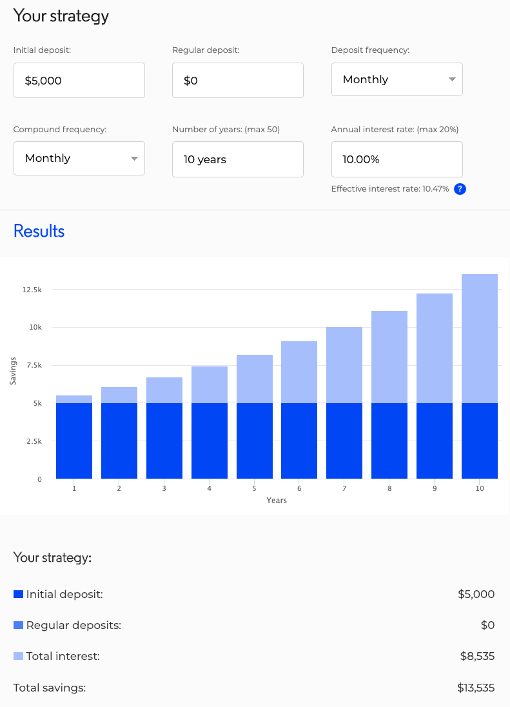
Scenario B
In scenario B, Nick starts with a $5,000 initial deposit, but over the next 10 years, he consistently adds $500 per month to it. What will be the result of this strategy?
Using the same annual interest rate of 10%, in 10 years, Nick makes $50,958 in interest, which brings his investment from $5,000 to $115,958!
Which return would you prefer? In scenario B, Nick only invested 10% of his initial deposit each month. But thanks to the magic of compound interest, he has significantly grown his investment.
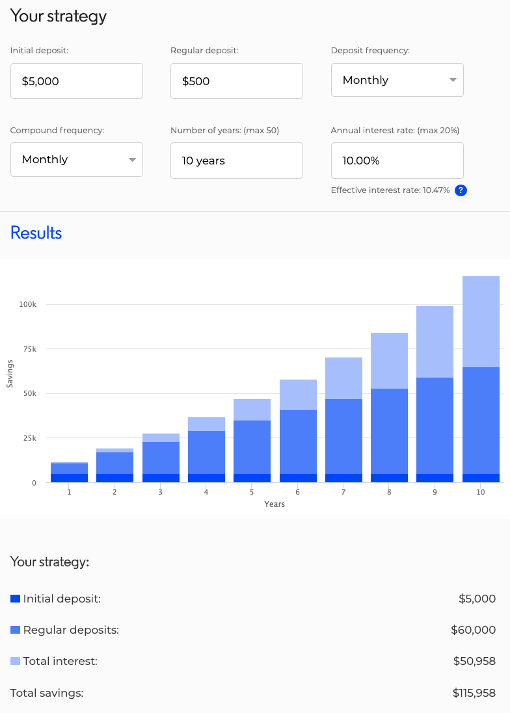
And so it goes with content/inbound marketing. Sure, it'll still work to a degree, but if you "turn off the tap," the results will vary dramatically over time.
This is particularly the case when it comes to search engine optimisation (SEO). Businesses that decide to turn SEO off now will only put themselves further behind their competitors — those who are keeping calm and carrying on.
Because of how the Google algorithm works, websites that have comprehensive content and a high domain authority/rating will always outrank websites with limited content and a lower domain authority/rating.
This was recently proved by a study by Brian Dean. Using data from Ahrefs, Brian found that a website’s overall link authority correlated to higher first page Google rankings.
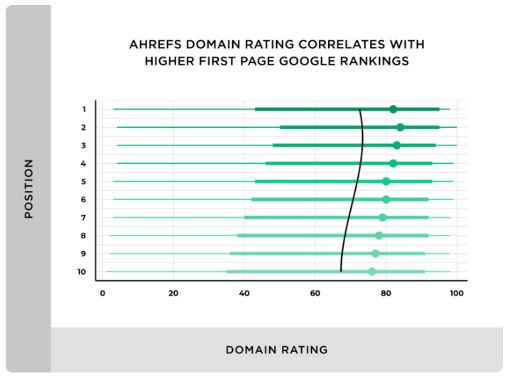
So if you currently have a low domain rating and you stop your SEO, expect your rating (and organic search traffic) to drop even lower over the coming months.
What about if you have a super high domain rating? Let’s say 80+. It’s true that you may not suffer as much as other businesses, but remember the illustration of compound interest.
SEO (when done correctly and white hat) is very time consuming, and it needs time to deliver ROI — just like compound interest does.
So what's the take-away point here? Be very careful about what you cut from your business. Use a scalpel, not a chainsaw and remember the power of compound interest.
5. Amp up your website and online presence
In this COVID-19 and post COVID-19 “new normal” world, it would be the understatement of the century to say that being online is REALLY important for your business.
And your website is the cornerstone to your online presence. For many businesses now and going forward, your website IS your business. It’s your best performing salesperson year after year. Your website and your digital presence will become far more important than your physical shop, office or warehouse.
The good news for small businesses is that creating a new website has never been easier.
Whether it’s WordPress, Wix, Squarespace, Weebly or HubSpot, there’s a lot of different options to get a professional website up and running.
Below is a grid from G2 which scores a range of website builders, to help you choose the best option for your business.
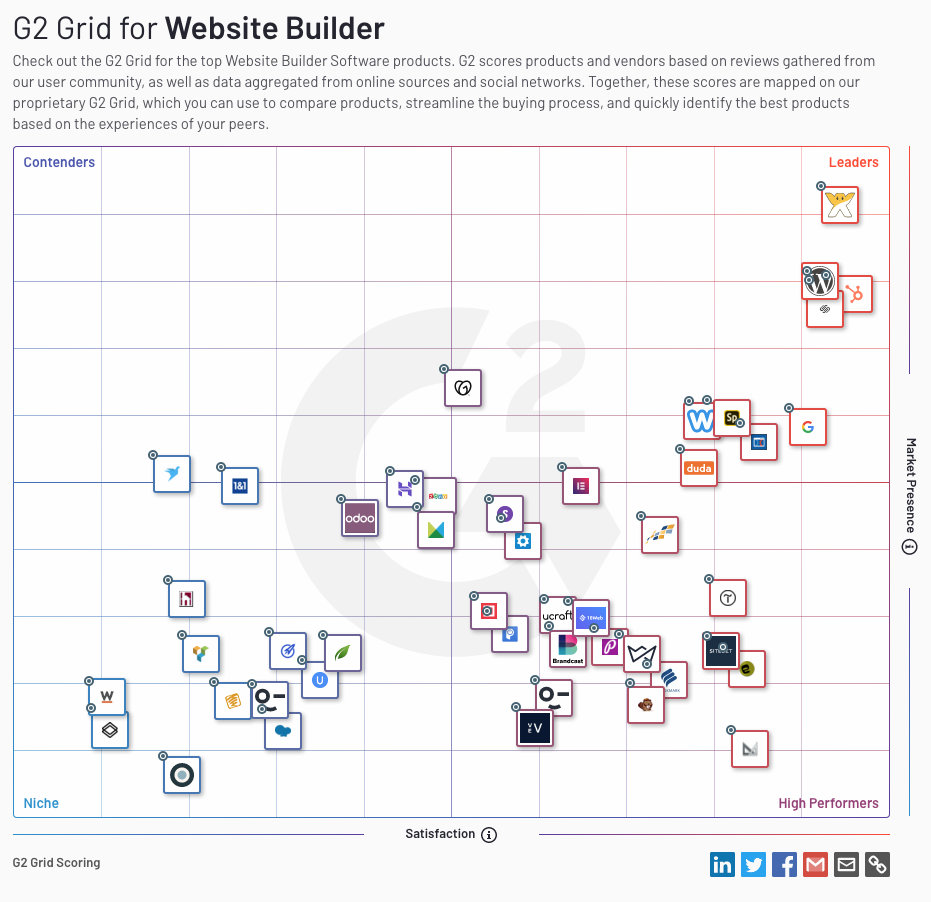
Are you leveraging the power of live chat on your website? A great way to engage and convert with more visitors. And as more people move and stay online, chat is only going to be a more crucial part of the conversation with your prospects and customers.
In addition to your website, creating and updating your Google My Business account is vital during this time, especially if you have different trading hours or a “temporarily closed” due to COVID-19.
With a Google My Business listing, you can feature in Google search and map results, with the ability of promoting your business address, website, posts, photos and importantly reviews.
Google Reviews are really important for your business, especially in uncertain times like this. Trust and credibility are an essential currency in these times and a key point of difference for your business. Now is a great time to go back and ask your customers to support your business by leaving a Google review.
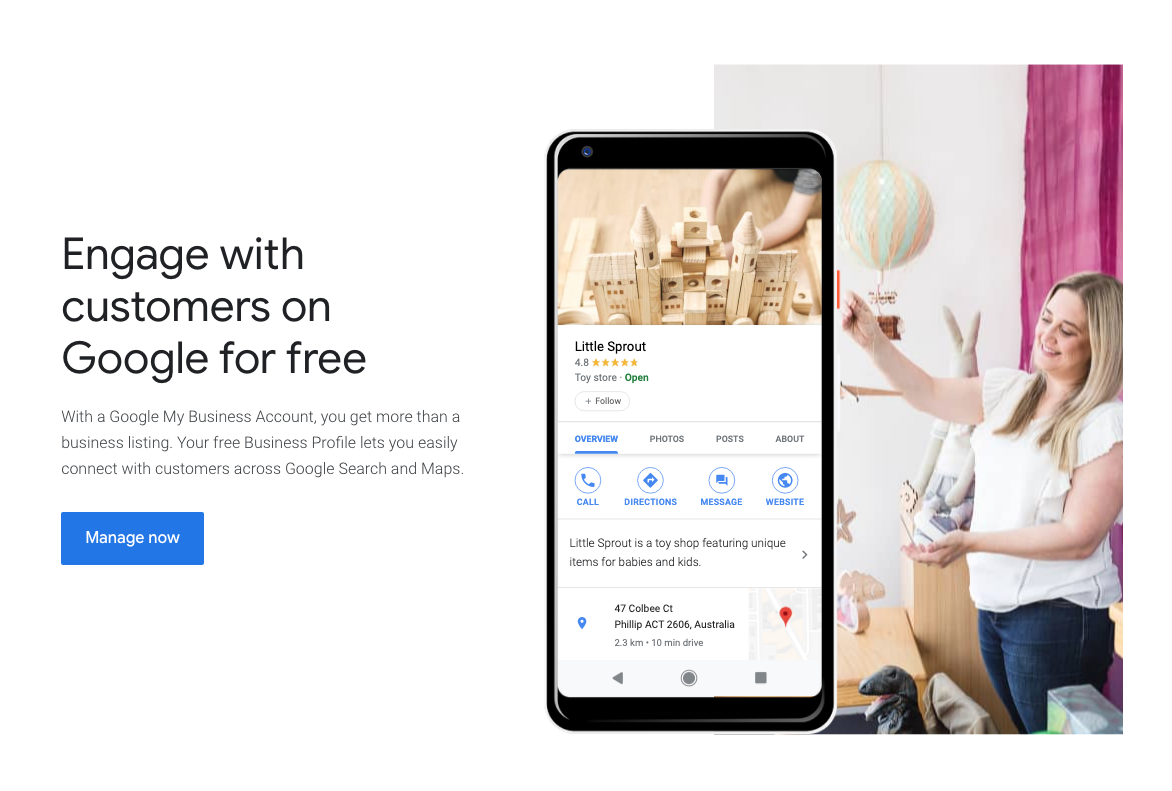
You should also add your social media accounts to the mix. Are they optimised? Are you posting on them regularly and engaging with your network and community?
Depending on your business and industry, social media is an essential way to build your brand and stay relevant during this crisis.
6. Adjust your content and messaging
COVID-19 has also forced businesses to adjust every aspect of their content and their sales and marketing funnel.
What worked in late 2019 no longer works in mid-2020. Your customers’ entire world has changed, which means they might have new priorities and problems.
It’s your job to find out what your customers’ new goals and problems are. If you can tap into their needs now, you’ll have a much better chance of capturing and keeping their attention.
Businesses need to match the mood of their customers by auditing and adjusting their approach to content and messaging.
For example, promotional content isn’t going to work that well right now for most businesses. So focus on educational content and lead with value.
Audit everything. For example, what message and imagery do you currently have on your advertising, landing pages, offers and email sequences? Is it appropriate, or is it tone-deaf and insensitive to the COVID-19 world?
In a matter of minutes, a poorly considered campaign could reap significant negative impacts on your business’ reputation and brand.
And instead of middle-of-the-funnel (MOFU) or bottom-of-the-funnel “consideration” and “decision” type content, you might find that top-of-the-funnel (TOFU) content that’s focussed on “awareness” performs better at this time.
7. Double-down on advertising
Advertising has never been cheaper than it is now, which is why it's an excellent opportunity to double-down on ads and claw back some market share at a huge discount. Some have reported a reduction in advertising costs of up to 50%!
Here are some quotes from Facebook, Google, Twitter and Microsoft confirming the discounted pricing across the board.
“We experienced a significant reduction in the demand for advertising, as well as a related decline in the pricing of our ads, over the last three weeks of the first quarter of 2020.” — Facebook
“. . . but then in March we experienced a significant slowdown in ad revenues” — Google/Alphabet
“. . . a strong start to the quarter that was impacted by widespread economic disruption related to COVID-19 in March.” — Twitter
“. . . a significant reduction in advertising spend, which impacted our Search and LinkedIn businesses.” — Microsoft
Below is some data from WordStream, showing the average cost per click (CPC) data by industry.
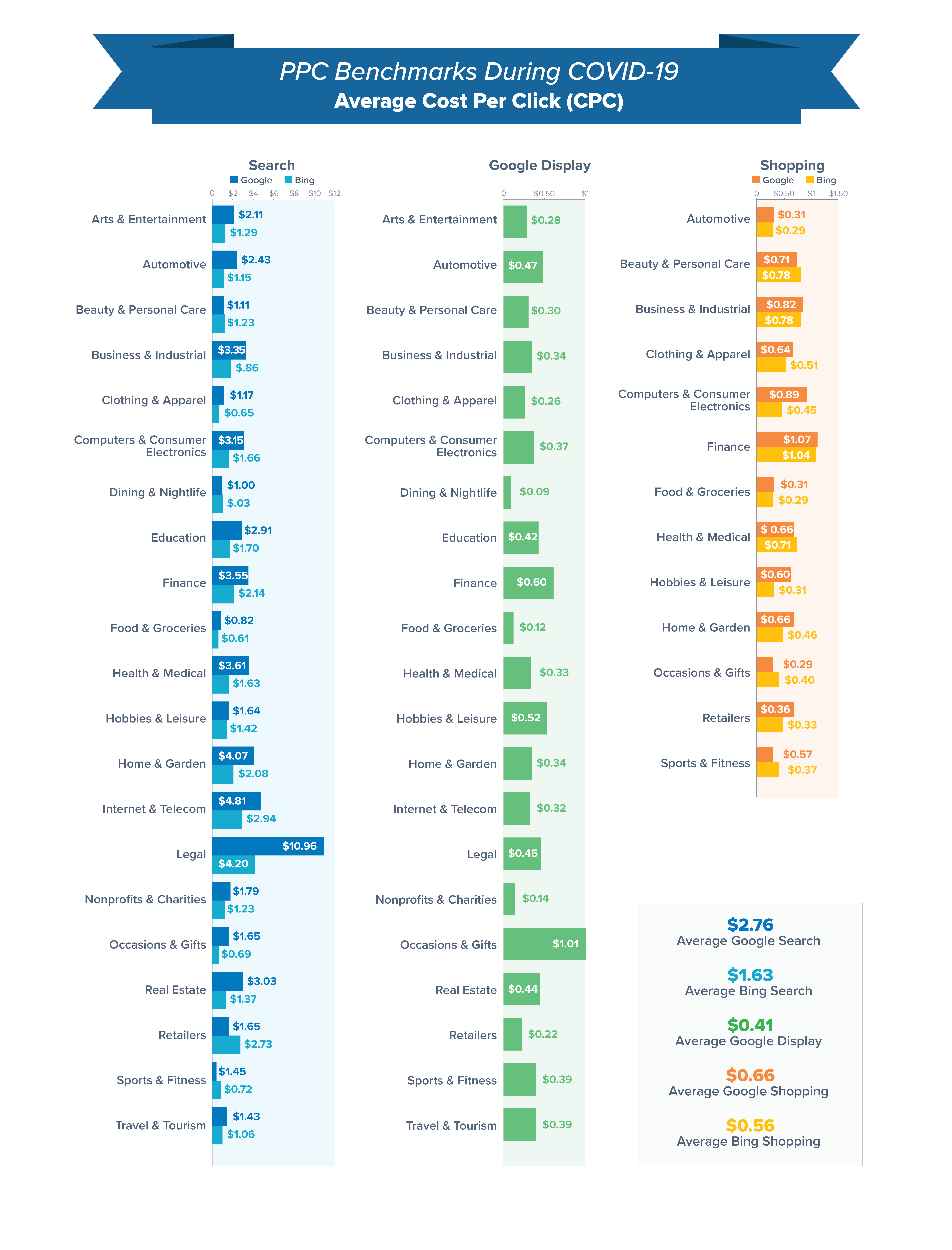
So use this time to shift budget from events or offline advertising to digital marketing to leverage this unique opportunity.
Having said that, according to WordStream, the average conversion rate (CVR) is down, meaning fewer leads and sales for the same ad spend.
Instead of leading with the sale or promotion, businesses should lead with value and genuinely look to help their customers. This will likely mean a longer sales process and a longer “payback,” but when the economy kicks back into gear, your business will be top-of-mind. Businesses that are known will win.
The good news for small businesses is that many advertisers are finding success with a smaller daily budget. This is especially true of businesses who advertise across multiple networks (e.g. Google, Facebook, LinkedIn) and can both measure and optimise for conversions and return on ad spend (ROAS).
Now is the time to introduce more people to your business and do it at a discounted price that we may never see again.
Investing in retargeting is another no-brainer during this time and something that should definitely not be cut. Retargeting advertising is displayed only to people who have visited or engaged with your website, landing pages or content. In other words, they’re warm.
Continuing to retarget them with COVID-friendly, high-value content and advertising will keep your brand (and business) top-of-mind when that upturn comes, which it will.
8. Focus on customer success
The Pareto Principle implies that 80% of your revenue will come from 20% of your existing customers. If COVID-19 has dramatically reduced your sales and revenue, or you’ve had to temporarily close up shop, it’s your loyal customers and promoters who will be the ones to keep your business booming well beyond the end of any global pandemic.
So focus on them right now. Focus on delivering outstanding customer success and experience. Spend this time focusing on people and cementing those customer relationships you've built over the years.
“In this unprecedented moment, we feel a great responsibility to help.” Sundar Pichai, CEO, Google
Look at what you can do to improve your customer experience? How can you engage and delight your customers? Are you currently measuring your customer satisfaction via a Net Promoter Score (NPS) survey, for example? This is a great way to understand how your customers are thinking about your business and how loyal your customers are.
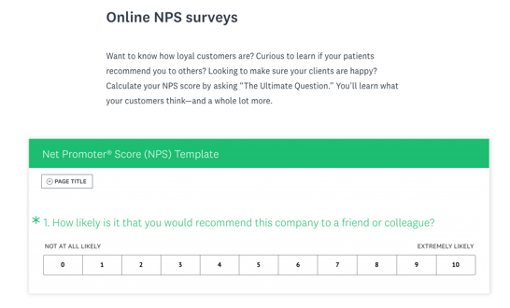
9. Grow your email list
During an economic downturn, cash is king. Those that have cash reserves can push through hard times and survive.
The closest thing to cash in a marketing sense is having an email list. When marketing budgets are cut, your email list — traffic you own — is king. Why? Because you’ve already acquired it. It’s already been paid for. You don’t need to buy it again from Google or Facebook or invest in any SEO. It’s yours, and no one can take it away from you.
Plus, email outperforms EVERY other marketing channel hands down. One of the biggest mistakes businesses make is not building a list from day one.
According to a study by McKinsey & Company, email marketing delivers a return on investment (ROI) 40 times higher than Facebook and Twitter combined.
Campaign Monitor states that email delivers a 4,400% ROI and $44 for every $1 spent.
And research by HubSpot states that 59% of people say that email marketing impacts their purchase decisions.
For many, this should not come as a surprise. Remember that your email list is not “cold” but “warm” or even “hot.” Your email list includes subscribers, leads and customers. It’s a list of people who have already “raised their hand” and have expressed interest in your business and your products and services. This is literally gold for your business.
What about the impact of COVID-19 on open rates? Research by HubSpot confirms that the volume of marketing emails has been steady, but the key fact is that email open rates are 25% higher than pre-COVID levels.
The same benchmark data from HubSpot indicates that sales emails have experienced declines in open rates since COVID-19. This reinforces the importance of “helping not selling” and of providing value and education over promotion at this time.
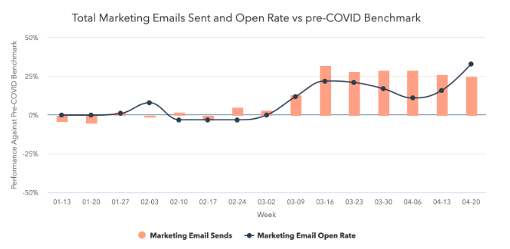
10. Automate
Every business right now is looking at their bottom line and analysing every expense with a fine-tooth comb (as they should).
Inefficiencies and a lack of productivity can be absorbed in good times, but in tough times, these can be a massive and unsustainable drain on your business profitability.
For example, let’s say that inefficiencies are costing your business 1 hour per week per employee (which is super conservative). Using an average full-time salary of $60,000, which equates to around $30/hour. If you have 20 employees, these inefficiencies are costing your business $600 per week or $7,200 per year.
Once you drill-down into your specific business, you might find that inefficiencies are costing your business a lot more than 1 hour per employee per week.
So look at your business and look at what your current technology-stack looks like? What technology are you currently using in your business? What’s being fully utilised and what isn’t? What are the gaps in your tech-stack?
Leveraging technology and automation can massively improve efficiencies and productivity in your business which will have a direct benefit on your bottom line.
Especially now with the boom of working from home (WFH) and remotely, which may become part of the “new normal” post-COVID, businesses that aren’t setup for this, will have to play a massive game of catch up.
The silver lining with COVID-19 is that it may have exposed weaknesses in your business. View this as an opportunity. View it as an impetus to improve and to take action.
Here are some questions you should be considering:
- What can you automate in your business?
- Are you leveraging a customer relationship management (CRM) system to organise and segment your subscribers, leads and customers (e.g. HubSpot)?
- Are you storing documents, policies and procedures in a centralised location (e.g. Dropbox, Google Drive)?
- Is your website, email marketing and landing page software talking to each other?
- How can your sales and marketing teams be more aligned?
- How can you communicate with your employees better (e.g. Zoom, Slack)?
- Are you using SEO tools to keep track of your organic search visibility?
Conclusion
So in conclusion, coronavirus (COVID-19) has been devastating globally on many levels.
And if we’re honest, no one really knows the real impact of this pandemic in the months and years ahead or what the “new normal” will look like.
But what we do know is that like previous pandemics and recessions, this too shall pass, and the economy will settle into a "new normal."
The economy and business is a key pillar of society and isn’t going anywhere.
The question really is — what can you do to give your business the best chance of survival?
Remember to “stand guard at the door of your mind” and focus on your mindset during this time. Spring always follows winter, just like day always follows night.
Look at your business and objectively assess whether your products and services are candy, vitamins or painkillers. Look to pivot some of your products and services from candy to vitamins to painkillers and think creatively.
Silence is not a good game plan right now. You need to lead and be present. Overcommunicate, join the conversation and focus on empathy and education.
While budgets and costs are being slashed, businesses need to be careful about what they’re cutting. Don’t cut the oxygen of your business — things that are driving brand, traffic, leads and sales. Cut your sales and marketing budget with a scalpel not a chainsaw.
Your website has never been more important. It's your best performing salesperson. Look to leverage it even more with live chat. And don’t forget your Google My Business page and your social media presence.
No one will reward you for being tone-deaf with your content or messaging. Match the mood of your audience and lead with empathy. Focus on awareness and top-of-the-funnel (TOFU) content that really adds value. Use this time to audit your entire marketing footprint and adjust your messaging to suit this COVID world.
Double-down on advertising. Data shows that cost-per-click (CPC) pricing across all major platforms are down up to 50%. Use this time to grow your brand and stay relevant and leverage the discounted rates currently available. Continue to retarget and nurture those that have already engaged with your business online.
Focus on your existing customers and their success. Invest in relationships and really helping your customers during this time.
Email is king. Continue to build your email list during this time. With a 4,400% ROI from email marketing, it’s the closest thing to money in the bank.
Finally, use this unique time to get your house in order. COVID-19 has no doubt exposed weaknesses in every business. Use this time to look at inefficiencies in your business, your tech-stack and how you might be able to automate more and improve your bottom line.
Stay safe!
Nathan Reiche
Nathan is the CEO and Founder of Content Chemistry, a digital marketing agency and a HubSpot Platinum Solutions Partner. He has over 15 years' marketing experience in Australia and Europe, working both on the client-side and as an agency. He's passionate about content/inbound marketing, SEO and sales funnels. And yes he's been told that he looks like Roger Federer.
